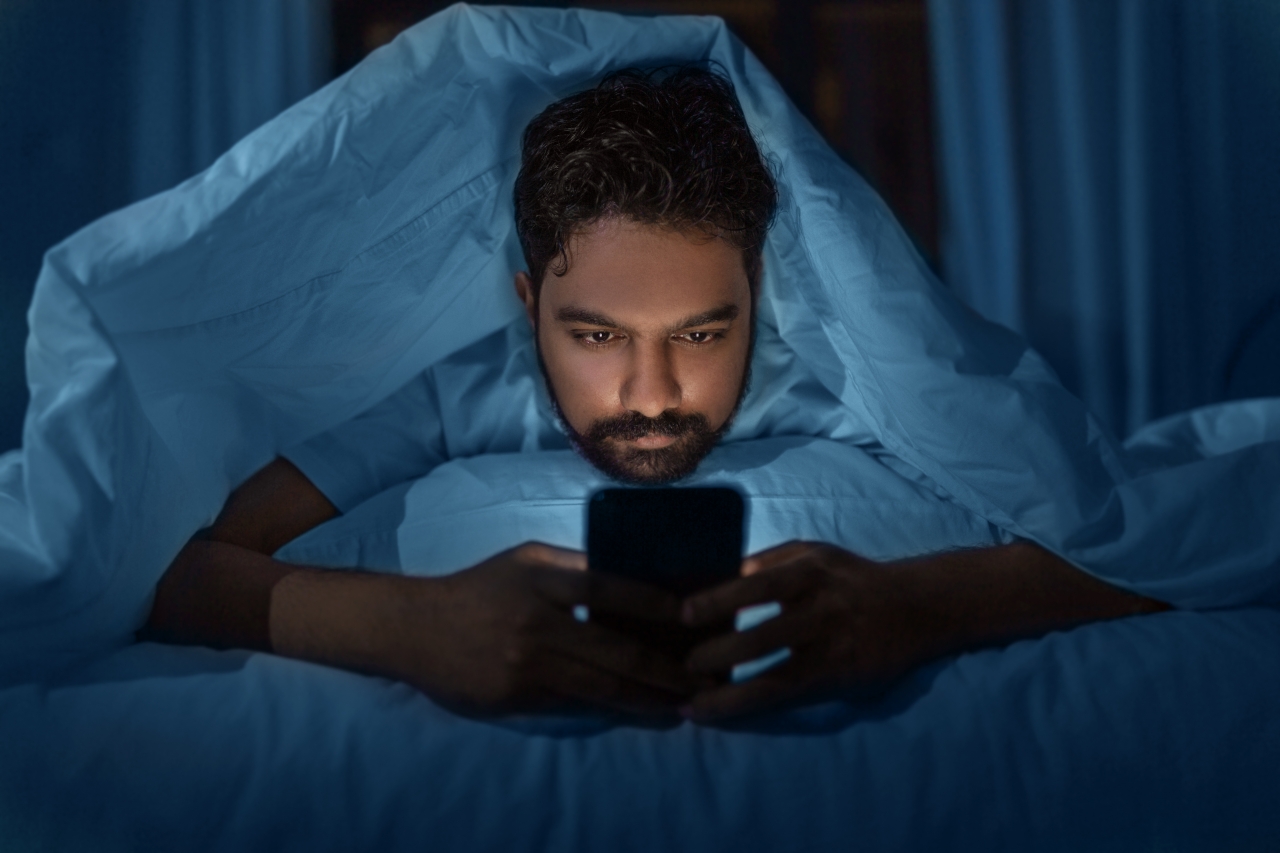Doing This Before Bed Can Mess with Your Metabolism—and It Has Nothing to Do with Food

We had no idea that something we do every single day could make this big of a difference!
Each product we feature has been independently selected and reviewed by our editorial team. If you make a purchase using the links included, we may earn commission.
Another tip we often mention to make it easier to fall asleep? Shutting down our tech gadgets about 2 hours before bed. In addition to making it easier to turn in, this habit may also help our metabolism, according to new research published in the journal Scientific Reports. Extended exposure to blue light at night may trigger metabolic changes that, over time, lead to weight gain.
"Energy metabolism is an important physiological process that is altered by light exposure," senior author of the study, professor Kumpei Tokuyama, tells University of Tsukuba Research News. "We hypothesized that compared with LEDs [light-emitting diodes], OLED [organic light-emitting diode] exposure would have a reduced effect on sleep architecture and energy metabolism, similar to that of dim light." FYI: Sleep architecture refers to a normal sleep pattern.
LEDs have spiked in popularity in the past decade or so due to their energy savings—Energy.gov reports that ENERGY STAR-rated LEDs use 75% less energy and last 25 times longer than typical incandescent lights. In addition to bulbs, LEDs are now found in many flat-screen TVs, computer monitors, phone and tablet screens. It's also a strong source of blue light, a form of light wave between 380 to 500 nanometers, that's very high energy and tough for the retina to block, say UC Davis Health experts. As a result, it can lead to eye strain, alertness and potential vision challenges (with extended exposure over the lifespan).
Polychromatic white LEDs emit a large amount of blue light. In contrast, OLEDs emit polychromatic white light that contains less blue light. So professor Tokuyama and his team set out to organize a small study to examine the difference.
To do so, they exposed 10 male participants to LED, OLED or dim light for 4 hours before they slept in a metabolic chamber. As the men slept, the scientists measured core body temperature, energy expenditure, fat oxidation and the levels of a measure of melatonin (a hormone involved in sleep) called 6-sulfatoxymelatonin.
"The results confirmed part of our hypothesis," professor Tokuyama explains in the University of Tsukuba Research News study recap. "Although no effect on sleep architecture was observed, energy expenditure and core body temperature during sleep were significantly decreased after OLED exposure. Fat oxidation during sleep was significantly lower after exposure to LED compared with OLED."
Fat oxidation was also related with 6-sulfatoxymelatonin levels after exposure to OLED, which led the researchers to believe that the impact of melatonin on energy metabolism varies depending on the type of light exposure.
"Light exposure at night is related to fat oxidation and body temperature during sleep. Our findings suggest that specific types of light exposure may influence weight gain, along with other physiological changes," professor Tokuyama adds.
This research is in line with past studies on light exposure, sleep and metabolism and while larger-scale and more extended studies are needed to verify these results, this is certainly a solid reminder to step away from Netflix and endless Instagram scrolling and pick back up with our nighttime reading routine. (Which just so happens to be correlated with making healthier food choices and earning more money, too!)
And it's another nudge that those trendy blue light glasses might be more than a trend. Affordable specs like TIJN Blue Light-Blocking Glasses (buy it: $12.99, Amazon) can help protect the eyes from the most taxing forms of blue light. You can also add blue light lenses to your prescription frames for all-day protection (buy it: starting at $95, Warby Parker).
Images Powered by 
